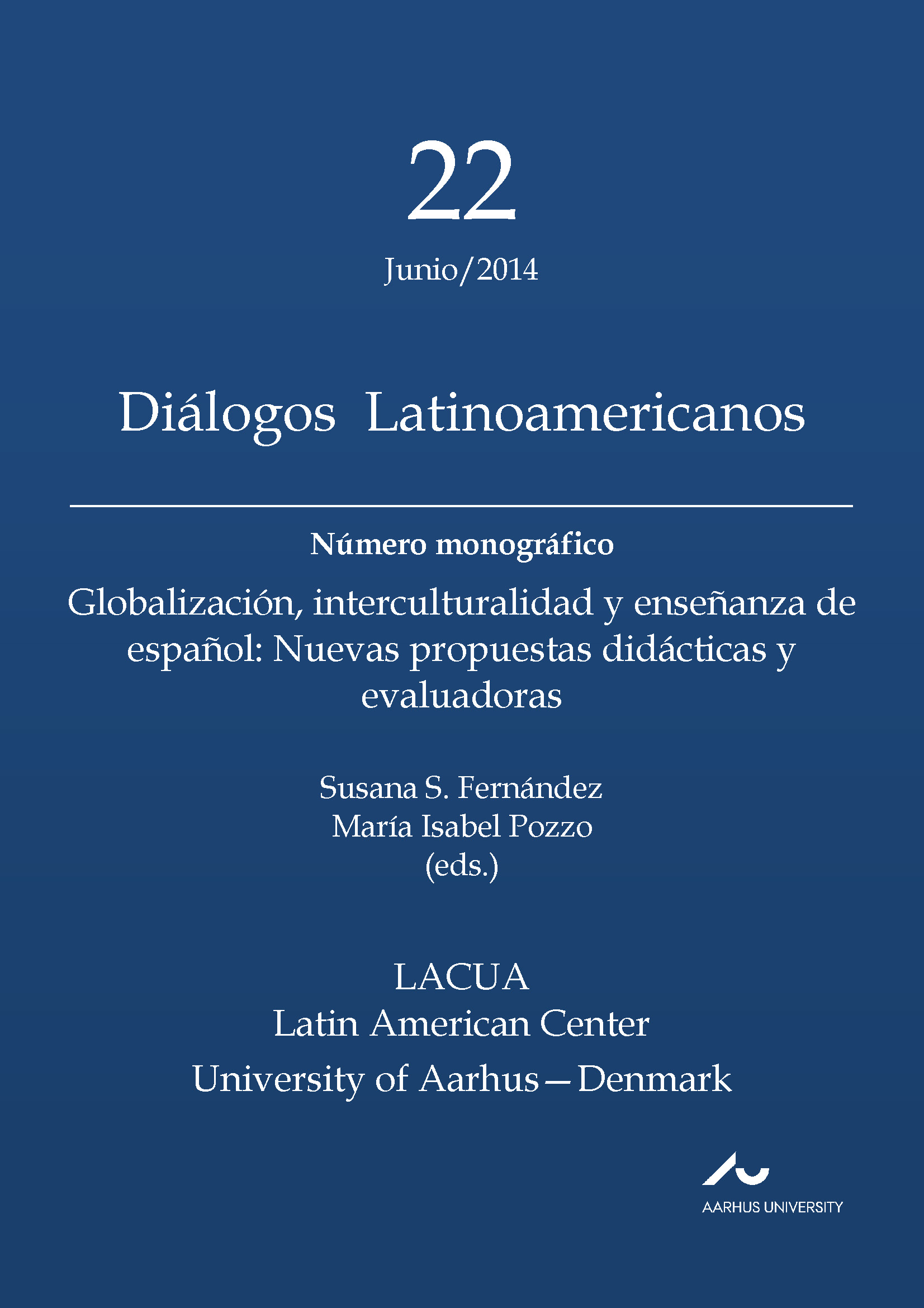Prosodia y discurso en el español rioplatense
DOI:
https://doi.org/10.7146/dl.v15i22.113138Keywords:
Prosodia, discurso, español, rioplatenseAbstract
Introducción
La prosodia está compuesta por un conjunto de rasgos –el tono, el timbre, la
intensidad y la duración, y sus correspondientes variaciones– que están
vinculados con estados emocionales de los emisores, estableciéndose un vínculo
natural entre ciertos rasgos prosódicos y ciertos estados de ánimo. En cuanto
vínculo natural, la prosodia tiene un carácter indicial o sintomático, y forma parte
de un conjunto más amplio de rasgos paralingüísticos, que comprenden también
los gestos y las expresiones faciales. Pero los rasgos prosódicos también pueden
funcionar como símbolos lingüísticos, asociándose de manera convencional a un
significado, y por consiguiente formar parte de la gramática de una lengua.
References
Computer Program Version 5.1.31. [documento WWW]. URL
http://www.praat.org/. [fecha de consulta junio de 2010].
Brazil, David (1985) The Communicative Value of Intonation in English. English
Language Research: Birmingham.
Brazil, D., Coulthard, M. y Johns, C. (1980). Discourse Intonation and Language
Teaching. Longman: London.
Couper-Kuhlen, Elizabeth (1986) An Introduction to English Prosody. Edward
Arnold: London.
Dabrowski, Alejandra y Labastía, Leopoldo (en prensa) ‘Prosodia y relevancia en
el discurso: selecciones tonales y altura tonal en el español rioplatense’. En:
Labastía, Leopoldo (Ed.), Cuestiones de Fonética, Fonología y Oralidad.
Serie Volúmenes temáticos de la Sociedad Argentina de Lingüística.
Escandell-Vidal, María Victoria (2005) La Comunicación. Gredos: Madrid.
Escandell-Vidal, María Victoria (2011) ‘Prosodia y Pragmática’. Studies in
Hispanic and Lusophone Linguistics, 4 (1), 193-208.
Granato, Luisa (2005) ‘Aportes de la entonación al significado del discurso’.
RASAL Lingüística 2005 (1), 85-109.
Gussenhoven, Carlos (2004) The Phonology of Tone and Intonation. Cambridge
University Press: Cambridge.
House, Gill (1990) ‘Intonation Structures and Pragmatic Interpretation’. En
Ransaram, Susan (Ed.), Studies in the Pronunciation of English (38-57).
Routledge: London.
Labastía, Leopoldo (2011) ‘Procedural Encoding and Tone Choice in Buenos
Aires Spanish’. En Escandell-Vidal, María Victoria, Leonetti, Manuel and
Ahern, Aoife (Eds.), Procedural Meaning: Problems and Perspectives (383-
413). Emerald: Bingley.
Labastía, Leopoldo y Dabrowski, Alejandra (2011) ‘Selección tonal y
construcción del discurso: una mirada desde la Teoría de la Relevancia’,
Segundas Jornadas Internacionales de Fonética y Fonología, 19 y 20 de
septiembre de 2011, Córdoba.
Labastía, Leopoldo y Dabrowski, Alejandra (en prensa). ‘Entonación y
relevancia en el discurso hablado del español rioplatense’. RASAL Lingüística.
Ladd, Dwight Robert (2008) Intonational Phonology. Cambridge University
Press: Cambridge.
Leonetti, Manuel y Escandell-Vidal, María Victoria (2004) ‘Semántica
conceptual/semántica procedimental’. En: Villayandre Llamazares, Milka
(Ed.), Actas de V Congreso de Lingüística General (1727-1738). Arco Libros:
Madrid.
Prieto, Pilar y Roseano, Paolo (Eds.) (2010) Transcription of Intonation of the
Spanish Language. Lincom Europa: Muenchen.
Sperber, Dan y Wilson, Deirdre (1995) Relevance: Communication and
Cognition. Blackwell: Oxford.
Wichmann, Anne (2000) Intonation in Text and Discourse. Longman: London.
Wilson, Deirdre (1994) ‘Relevance and Understanding’. En: Brown, Gillian,
Malmkjær, Kirsten, Pollitt, Alastair, Williams, John (Eds.), Language and
Understanding (837-58). Oxford University Press: Oxford.
Wilson, Deirdre y Sperber, Dan (2004) ‘Relevance Theory’. En Horn, Lawrence,
Ward, Gregory (Eds.), The Handbook of Pragmatics (607-632). Blackwell
Publishing: Malden y Oxford.
Downloads
Published
How to Cite
Issue
Section
License
Counting from volume 31 (2022), articles published in Diálogos Latinoamericanos are licensed under CC-BY 4.0. Read more about the license terms here https://creativecommons.org/licenses/by/4.0/.
No Creative Commons license applied on volumes 1-30. All rights reserved by the authors. Readers may download, read, and link to the articles, but they cannot republish the articles.
With the publication of volume 31 (2022), authors retain the full copyright to their articles and give Diálogos Latinoamericanos the right to the first publication. Authors also retain copyright to earlier versions of manuscripts, such as the submitted (pre-print) and the accepted manuscript (post-print).
Copyright to articles published in volumes 1-30 is held by the authors.





